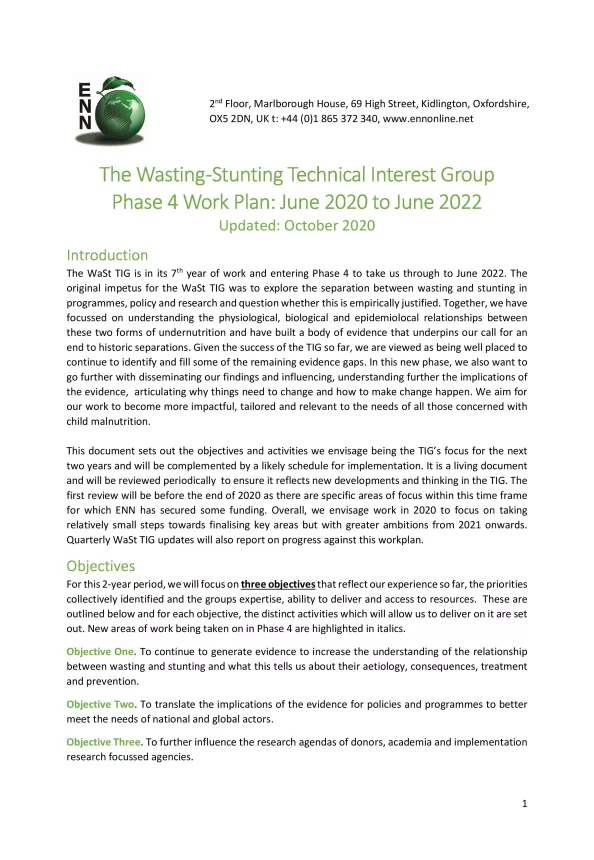The Wasting -Stunting Technical Interest Group Phase 4 Work Plan: June 2020 to June 2022
Publication details
Introduction
The WaSt TIG is in its 7th year of work and entering Phase 4 to take us through to June 2022. The original impetus for the WaSt TIG was to explore the separation between wasting and stunting in programmes, policy and research and question whether this is empirically justified. Together, we have focussed on understanding the physiological, biological and epidemiolocal relationships between these two forms of undernutrition and have built a body of evidence that underpins our call for an end to historic separations. Given the success of the TIG so far, we are viewed as being well placed to continue to identify and fill some of the remaining evidence gaps. In this new phase, we also want to go further with disseminating our findings and influencing, understanding further the implications of the evidence, articulating why things need to change and how to make change happen. We aim for our work to become more impactful, tailored and relevant to the needs of all those concerned with child malnutrition.
This document sets out the objectives and activities we envisage being the TIG’s focus for the next two years and will be complemented by a likely schedule for implementation. It is a living document and will be reviewed periodically to ensure it reflects new developments and thinking in the TIG. The first review will be before the end of 2020 as there are specific areas of focus within this time frame for which ENN has secured some funding. Overall, we envisage work in 2020 to focus on taking relatively small steps towards finalising key areas but with greater ambitions from 2021 onwards. Quarterly WaSt TIG updates will also report on progress against this workplan.
